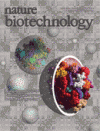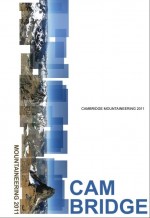Spanish scientists have collected more than 32,000 signatures in less than a week in support of a petition that urges Spain’s tax authority to adopt a novel way of raising funds for research: adding a checkbox to income tax forms that would allow taxpayers to direct 0.7% of their contribution to science. Continue reading Spanish researchers petition for taxpayer donations
Category Archives: Outlets
Monsanto to face biopiracy charges in India
 An Indian government agency has agreed to sue the developers of genetically modified (GM) eggplant for violating India’s Biological Diversity Act of 2002. India’s National Biodiversity Authority (NBA) is alleging that the developers of India’s first GM food crop—Jalna-based Maharashtra Hybrid Seeds Company (Mahyco) partnered with St. Louis–based seed giant Monsanto and several local universities—used local varieties to develop the transgenic crop, but failed to gain the appropriate licenses for field trials. Continue reading Monsanto to face biopiracy charges in India
An Indian government agency has agreed to sue the developers of genetically modified (GM) eggplant for violating India’s Biological Diversity Act of 2002. India’s National Biodiversity Authority (NBA) is alleging that the developers of India’s first GM food crop—Jalna-based Maharashtra Hybrid Seeds Company (Mahyco) partnered with St. Louis–based seed giant Monsanto and several local universities—used local varieties to develop the transgenic crop, but failed to gain the appropriate licenses for field trials. Continue reading Monsanto to face biopiracy charges in India
Synthetic Stones Capture Carbon
While scrubbers in smokestacks at coal plants can pull out toxic gases like sulfur dioxide, scientists haven’t yet developed a cost-effective technology to remove carbon dioxide from industrial exhaust. Now European researchers have tinkered with the chemical composition of limestone to produce a material that absorbs almost twice as much CO2 as the natural mineral can (Environ. Sci. Technol., DOI: 10.1021/es2034697).
Jaegihorn incident report
 Messieurs Goldman and Davenport, in Switzerland for the McCombie nuptials, invited Ms Crockett and Mr Laursen to an attempt on the Jaegihorn, above Saas Grund in the Swiss Valais region. Goldman and Davenport charmed the hut mistress into providing extra victuals. With full bellies and a 4am start, Laursen led the team on a circular tour of a neighbouring moraine in a suspected effort to escape the climb.
Messieurs Goldman and Davenport, in Switzerland for the McCombie nuptials, invited Ms Crockett and Mr Laursen to an attempt on the Jaegihorn, above Saas Grund in the Swiss Valais region. Goldman and Davenport charmed the hut mistress into providing extra victuals. With full bellies and a 4am start, Laursen led the team on a circular tour of a neighbouring moraine in a suspected effort to escape the climb.
When the fog cleared and the su n rose, however, the team identified the start of the Alpendurst route and commenced climbing activities culminating in a successful summit. From here the evidence grows patchier. The two rope teams lost sight of one another. Subsequent reports from CUMC Zurich stationmaster Kavanaugh place Goldman and Davenport on a dance floor at a castle outside Basel ca. 3am. Davenport failed to report to the post-climb debriefing in Dietikon while Goldman reported to Dietlikon instead. Kavanaugh relieved all parties of their duties in disgust.
n rose, however, the team identified the start of the Alpendurst route and commenced climbing activities culminating in a successful summit. From here the evidence grows patchier. The two rope teams lost sight of one another. Subsequent reports from CUMC Zurich stationmaster Kavanaugh place Goldman and Davenport on a dance floor at a castle outside Basel ca. 3am. Davenport failed to report to the post-climb debriefing in Dietikon while Goldman reported to Dietlikon instead. Kavanaugh relieved all parties of their duties in disgust.
See the original as it appeared in Cambridge Mountaineering: [pdf]
